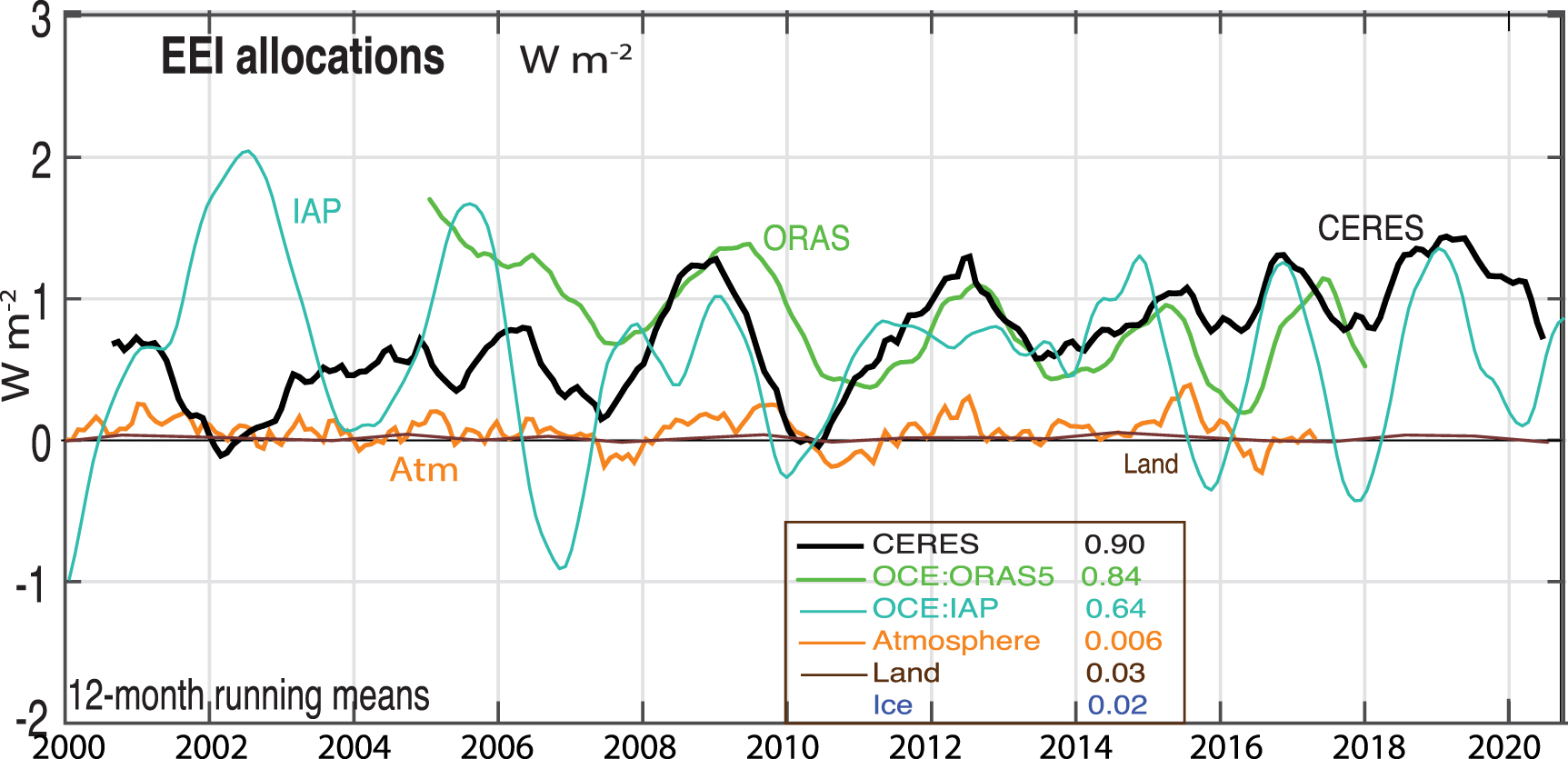A New Paper Makes Low Sensitivity Models More Implausible

A paper was published this week that argues that low-sensitivity models do a poor job of reproducing CERES-derived EEI trends. In the words of the paper, the authors used CMIP6 models "to illustrate that low climate sensitivity models have an EEI trend behavior that is inconsistent with the satellite-derived EEI trend." Even though models with an ECS near 3°C do a good job of reproducing current warming, CMIP6 models often differ in the in EEI trends. For instance, The CERES data show a stronger trend in EEI than the multi-model CMIP6 mean and higher EEI in 2023 than any of the CMIP6 models. However, for individual CMIP6 models and ensembles, EEI is comparable to or higher at other periods than the CERES value in 2023. The difference in trends can be seen by comparing the red CERES line to the black CMIP6 model mean. Even though the interannual variability in the CMIP6 models is consistent CERES observations, the observed trend in EEI, especially since about 2010, is higher t...


%20and%20Planetary%20Heat%20Uptake%20(In%20Situ).png)
%20(6).png)
